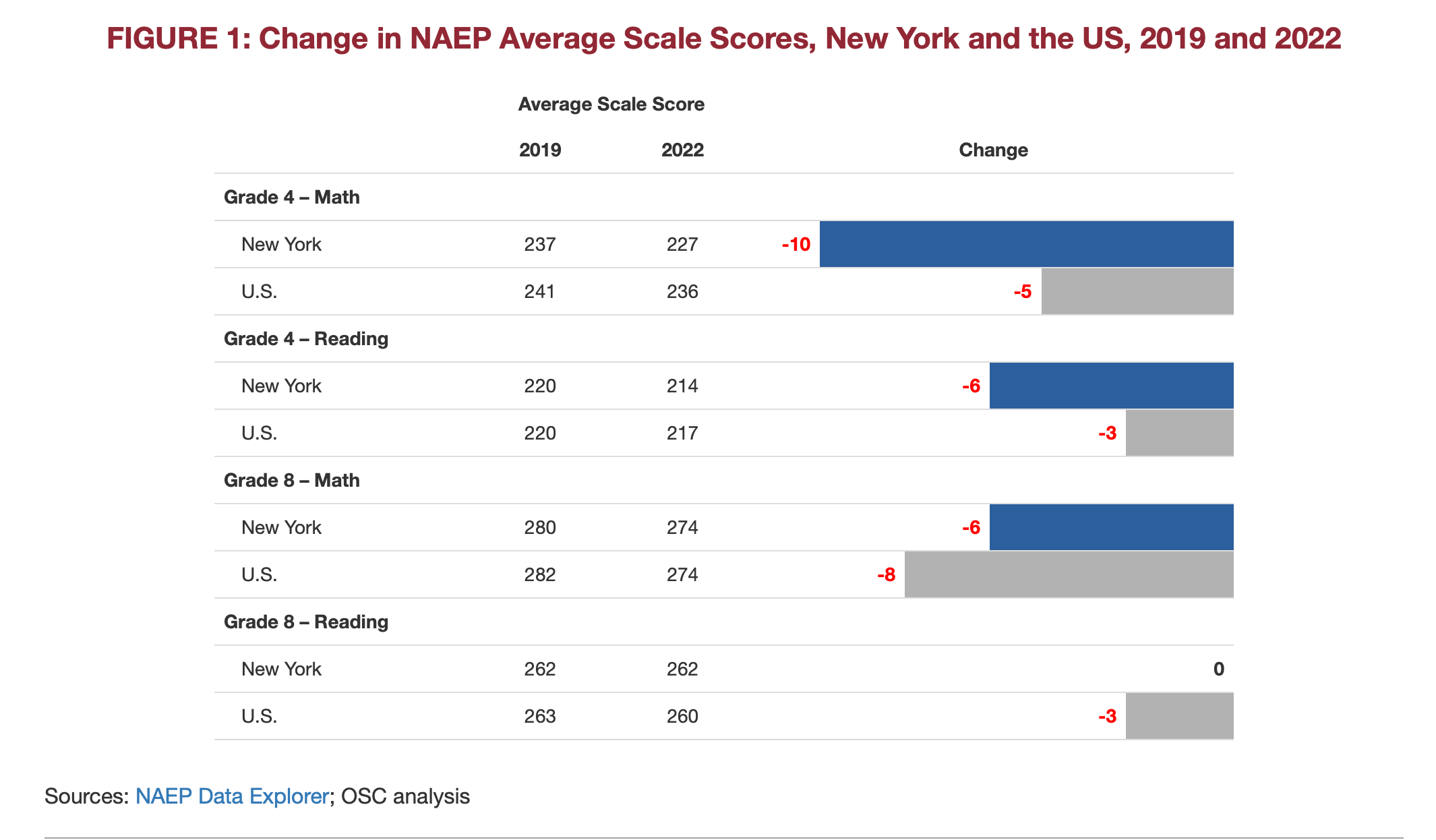New York fourth graders have some catching up to do in their math and reading exam scores, according to a report released on March 13 by the state’s Comptroller Thomas DiNapoli and the Office of Budget Policy and Analysis.
The comptroller’s office reviewed federal data from last year’s assessment—which is given every two years to fourth, eighth, and twelfth graders across the U.S.—and found how deeply the COVID-19 pandemic impacted the state’s fourth grade math and reading scores.
The “nation’s report card,” led by the federal Department of Education’s National Assessment of Educational Progress, showed that the decline in fourth grade math and reading scores in New York state was double that of the national average. The state found that math scores are showing the “most concerning drops.”
“The classroom disruptions caused by the pandemic have hurt New York’s students. Academic losses were greater for younger students, with fourth grade scores dropping more than the national average,” DiNapoli said in a statement.
The math scores were worse than 45 other states and the reading scores worse than 38 other states. The state’s math scores dropped by 10 points equating to a loss of an entire school year, according to consulting company McKinsey & Company.
The decline in fourth grade math scores was across all gender, racial, and ethnic groups. While Asian and Pacific Islander fourth graders score the highest in math in the state, they also experienced the steepest decline in math proficiency, as well as students from low-income households, according to the report.
Female fourth graders across New York scored lower in math and reading than male fourth graders. Their math proficiency had dropped the most in the last two decades.
New York state currently ranks 46th in fourth grade math, with New Mexico, Maryland, Virginia, Washington D.C., and Delaware experiencing even more declines in fourth-grade math proficiency, the nation’s report card shows.
As a result of the report, DiNapoli suggested the state’s education department provide school districts with emergency pandemic funding for students who are most in need.
The state was provided with roughly $15 billion in pandemic aid from the federal government for elementary and secondary schools. The funding must be used by September 2024. So far, the state has spent around 38% of that funding, according to DiNapoli’s COVID-19 Relief Program Tracker.
The test results, according to the comptroller, show how important it is to utilize the federal aid “to address learning loss and achievement gaps.”
“Districts should use this time to review their current plans and make any necessary amendments to ensure funds are being invested in evidence-based practices targeted to the students most in need,” the report stated. “These decisions will play an important role in avoiding negative long-term consequences for students.”






































